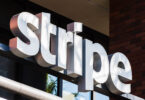Today at the Hyperledger Global Forum, Sopnendu Mohanty of the Monetary Authority of Singapore (MAS) discussed an experimental project it’s working on to enable banks worldwide to use blockchain and central bank digital currencies (CBDC) for cross border payments. Key aims include making international payments faster, cheaper and safer.
Project Dunbar is a joint project between MAS and the Bank for International Settlements (BIS) Innovation Hub that is technically a multi central bank digital currency (M-CBDC) experiment. Mohanty was keen to emphasize that such a ledger would be provided purely as a settlement service, so commercial banks could use it to make international transfers, which sounds somewhat similar to SWIFT. The hope is this will make the settlement process easier.
“Central banks have come a long way to reconcile that there is a play for a DLT based shared ledger as a way to re-design your settlement system. Whether (that’s) for domestic settlement for securities and payments or for international settlement of securities and payment,” said Mohanty.
The G20 has made it a key priority to see improvements in cross border payments, and an M-CBDC is one potential avenue to address this. In March, the BIS published a paper that explored M-CBDC and outlined three potential models to enable interoperability between different CBDCs.
A first avenue is to create common standards for technical approaches, message formats and data, although historically this has been hard. A second model is to interlink domestic CBDC systems, which is viewed as relatively high risk. And the final option was a shared ledger, similar to what MAS is working on.
Mohanty made it clear why he sees DLT as an important option because MAS has already tried an alternative route. Back in 2016/17 MAS started working with the Bank of Thailand to enable the two country’s faster payment systems to interoperate. A solution finally went live in April and achieved a reduction in interbank payment costs from 10-15% to 3-5%. But further reducing the foreign exchange and settlement costs needs a different approach.
“That’s where the beauty of a wholesale (CBDC) currency plus a DLT based shared ledger could make a big difference,” said Mohanty, expressing the desire to “collectively bring down the 3% cost to a sub dollar cost for transfers” and hence encourage financial inclusion.
Project Dunbar is entirely separate from Partior, the Singapore joint venture between DBS Bank, JP Morgan, and Temasek, aiming to make multi-currency interbank payments within Singapore. Partior will use tokenized bank money rather than a CBDC.






